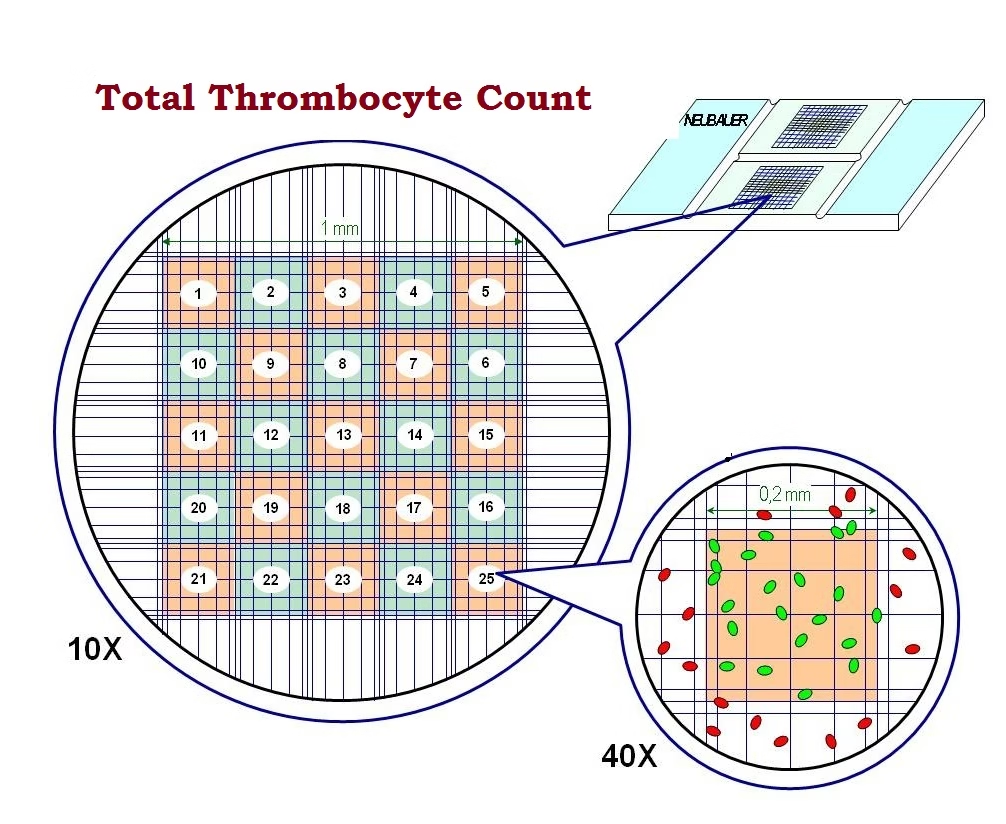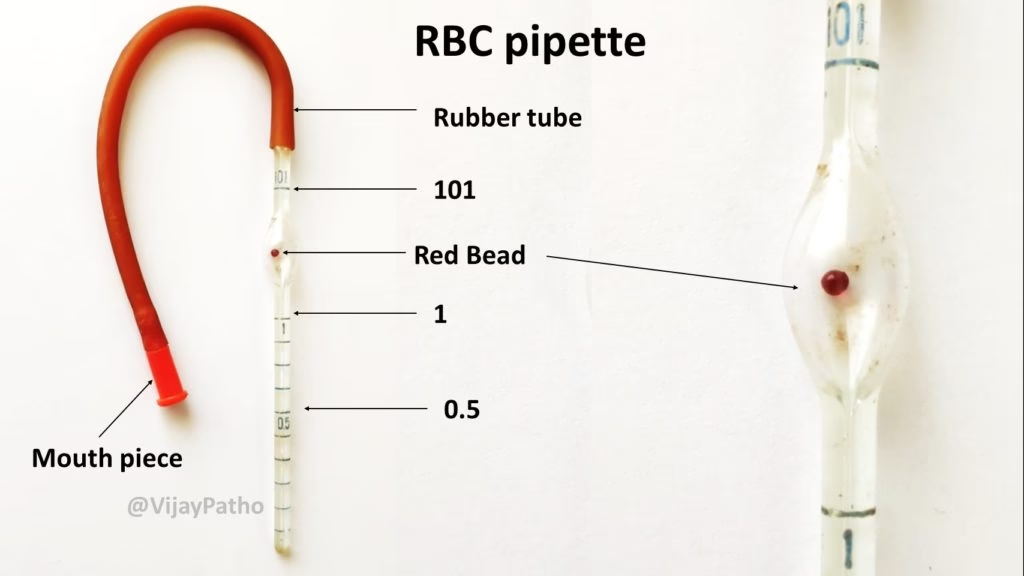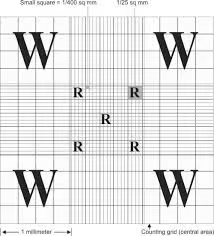
AIM: Determination of Platelet Count (Thrombocyte)
Principle
- The total platelet count is a blood test used to measure the number of platelets (thrombocytes) in the blood.
- Platelets are crucial for blood clotting and wound healing.
- The count is usually performed using an automated blood cell analyzer or a manual method with a hemocytometer.
- The procedure involves diluting a blood sample and counting the platelets under a microscope or via automated machinery, which calculates the total number of platelets per microliter (µL) of blood.
Requirements
- Whole blood EDTA
-
Hemocytometer
-
Hemocytometer (counting chamber)
-
Pipettes
-
Glass slides
-
Cover slips
- Microscope
- Diluting fluid: –
- Procaine – 3.0 g
- Sodium hydrochloride – 10 g
- Distilled water – 100 ml

Procedure
- Prepare a dilution fluid.
- Dilute the blood sample with the dilution fluid in a known ratio.
- By using an RBC pipette, draw blood up to the 0.5 mark.
- Wipe excess blood on the outside of the pipette.
- The diluting fluid is drawn up to mark 101 (blood is diluted 1:200).
- Mix the contents in the bulb thoroughly.
- After 5 minutes, discard the first drop, then transfer a small drop to one side of the counting chamber.
- Place, he filled a mounted counting chamber under a petri dish with a moist filter paper. Let it stay undisturbed for l5 minutes.
- Place the counting chamber carefully on the stage of the microscope. Under low power magnification, focus red cell counting area.
- Move to view the chamber square of the red cell area and change to a high-power objective.
- Keep the condenser down and reduce the light by adjusting the diaphragm.
- The platelets will appear like highly refractile particles.
- Count platelets in all 25 small squares. The area covered by 25 squares is equivalent to I square mm.
- Calculation:
-
Use the formula to calculate the total platelet count based on the number of platelets counted, dilution factor, and the volume of the hemocytometer.
-
Platelet count (per µl) = Number of platelets counted × Dilution /Volume of fluid


Normal Range
Normal Platelet Count: 150,000 to 450,000 platelets per microliter (µL) of blood.
Clinical Significance
Low Platelet Count (Thrombocytopenia):
-
Platelet Count: Below 150,000 platelets/µL.
-
Causes:
-
Bone marrow disorders (e.g., leukemia, aplastic anemia).
-
Autoimmune diseases (e.g., lupus, immune thrombocytopenic purpura [ITP]).
-
Viral infections (e.g., dengue, HIV).
-
Drug-induced (e.g., heparin-induced thrombocytopenia).
-
Blood loss or dilution (e.g., after massive transfusion).
-
Liver diseases (e.g., cirrhosis).
-
-
Symptoms:
-
Increased risk of bleeding (e.g., easy bruising, petechiae, gum bleeding).
-
Prolonged bleeding after injury or surgery.
-
High Platelet Count (Thrombocytosis):
-
Platelet Count: Above 450,000 platelets/µL.
-
Causes:
-
Reactive (secondary) thrombocytosis due to infections, inflammation, or iron deficiency.
-
Essential thrombocythemia (a type of myeloproliferative disorder).
-
Chronic myelogenous leukemia (CML).
-
-
Symptoms:
-
Risk of abnormal blood clot formation, leading to conditions like stroke, deep vein thrombosis (DVT), or pulmonary embolism.
-
Can be asymptomatic, but in some cases, patients may have headaches, dizziness, or vision disturbances.
-
Monitoring Disease Progression and Treatment:
-
Platelet count is used to monitor conditions such as:
-
Cancer treatments (chemotherapy, radiotherapy) that may affect platelet production.
-
Liver cirrhosis, where platelet count can reflect the degree of disease progression.
-
Bone marrow disorders, where changes in platelet count may indicate response to treatment.
-